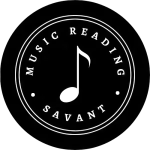| This reading music lesson is a supplement to the Alfred’s Essentials of Music Theory self-study workbook. While no book is perfect for learning how to read music, this is one of the best available. The concise explanations, brief practice exercises, ear-training CD’s, glossary of music terms, and answer key make it an excellent value. Buy this top-rated self-study course for beginners to advanced musicians and follow along with me. |
Have you noticed how the time signature organizes the notes and rests?
According to the top number, only a certain number of beats can exist in each measure.
There cannot be any more or any less.
So now you hopefully understand why an entire piece of music is divided into smaller sections called “measures” that contain the same amount of beats.
What are we measuring between the bar lines? The total number of beats represented by notes and rests.
3/4 Time Signature
The 3/4 time signature uses all of the same principles discussed in the 4/4 time signature lesson.
The only difference is one less beat in each measure.
Let’s go through a quick review using the example below.
 Measure 1
Measure 1
Since there are now only three beats in each measure, we will assign the first quarter note count “1”, the quarter rest count “2”, and the last quarter note count “3”.
Remember that 1 quarter note or quarter rest equals one beat.
Measure 2
After the bar line, we always start over with count “1”. In this case, the first quarter rest will be assigned just that. The following half note receives two beats, so it will be given counts “2” and “3”.
Measure 3
Again, we are in a new measure, so we have to start over with “1”. The quarter rest will be count “1” while the half rest covers counts “2” and “3”.
Making Sense of It
Is this making any sense yet? Do you see how the notes and rests are grouped together evenly in each measure separated by bar lines?
Is it clear how we count the notes and rests in each measure making sure we are covering all beats represented by the top number of the time signature?
If not, we’ll give it one more shot in the next lesson.
